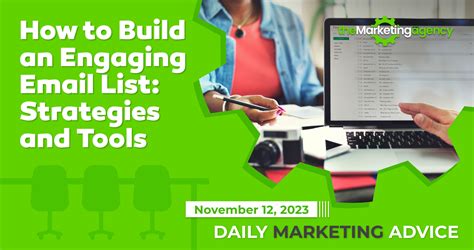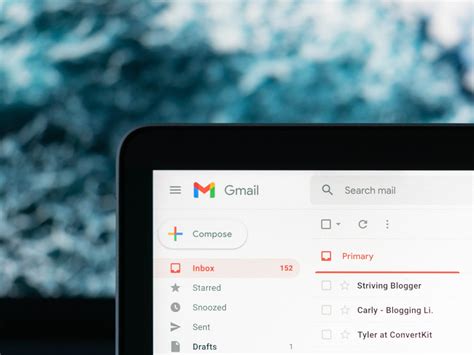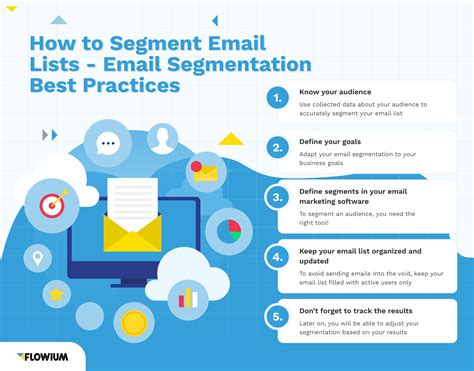When it comes to crafting successful email outreach, the key lies in understanding how to create compelling content that resonates with your audience. In this article, we'll delve into proven strategies that can help you build stronger connections, increase open rates, and drive higher engagement through your emails.
1. Craft Engaging Subject Lines
One of the most crucial aspects of any email marketing campaign is crafting subject lines that grab attention and entice readers to open your emails. A well-crafted subject line should be concise, intriguing, and evoke curiosity. Including personalization and urgency can also significantly boost open rates.
2. Focus on Relevant and Valuable Content
Once you've captured the attention of your subscribers and opened the door to their inbox, it's crucial to immediately deliver value. Your email content should be informative, actionable, and tailored to your audience's specific needs and interests. Avoid generic information and add a personal touch to make your emails stand out.
3. Optimize for Mobile Devices
In today's smartphone-dominated world, it's essential to ensure that your emails are mobile-friendly. Mobile optimization includes using responsive email templates, simplifying the design, and keeping the text concise and scannable. Additionally, make sure any links or call-to-action buttons are easily clickable on smaller screens.
4. Segment and Personalize Your Emails
Segmenting your email list based on various criteria, such as demographics, interests, or purchase history, allows you to tailor your messages to specific groups. By personalizing your emails, you can ensure that your subscribers receive content that is relevant and meaningful to them, thereby increasing the likelihood of engagement and conversions.
5. Test and Analyze Your Campaigns
No matter how well you plan your email campaigns, it's crucial to continuously test and analyze their performance. Experiment with different subject lines, content formats, layouts, and send times to understand what resonates best with your subscribers. Use email analytics to track open rates, click-through rates, and conversion rates, enabling you to refine your strategies and improve results over time.
By implementing these proven email marketing strategies, you can elevate your email campaigns to new heights and achieve greater success in reaching and engaging your target audience.
Building an Engaging Email List

A key aspect of successful email outreach is the creation of an active and interested subscriber base. In this section, we will explore effective strategies for building a compelling email list that will captivate your audience and drive engagement, without relying on generic tactics or inundating your subscribers with irrelevant content.
Crafting Captivating Email Subject Lines
In the vast digital landscape, where attention spans are fleeting and inboxes overflow with messages, the subject line of an email plays a vital role in capturing the recipient's interest. The art of crafting irresistible subject lines involves a delicate balance between creativity, relevance, and clarity, ensuring that your email stands out amidst the sea of competing messages.
One essential aspect of creating captivating subject lines is employing the power of words to evoke curiosity and evoke an emotional response. By carefully selecting captivating vocabulary, you can ignite curiosity within the reader, compelling them to click and open your email. Experiment with dynamic synonyms that spark intrigue, denote urgency, or convey exclusivity - stirring a desire to discover what lies inside.
Another effective tactic to optimize subject lines is by personalizing them to speak directly to the individuals receiving your emails. By incorporating their names or referencing their previous interactions with your brand, you establish a sense of familiarity and relevance, enhancing the chances of your email being opened and engaged with. Strive to connect with your audience on a personal level by tailoring subject lines to align with their needs, preferences, or purchase history.
Furthermore, brevity is key when it comes to crafting subject lines that compel action. In a world where people are overloaded with information, a concise and to-the-point subject line is more likely to captivate your recipient's attention. Use clear and concise language to articulate the primary message or benefit of your email, providing a compelling reason for the recipient to explore further.
Lastly, always keep in mind the importance of testing and analyzing the effectiveness of your subject lines. A data-driven approach allows you to evaluate the impact of different strategies and iterate on your messaging to continually improve open rates and engagement. Experiment with various subject lines, track the metrics, and adjust your approach based on insights gained, ensuring that your email marketing campaigns continuously evolve to maximize their impact.
Personalizing Email Content

Email personalization plays a crucial role in creating impactful and engaging email marketing campaigns. It involves tailoring email content to individual recipients, making them feel valued and increasing the chances of conversion. By customizing emails based on recipient preferences, demographics, and past interactions, you can enhance user experience and foster stronger connections with your target audience.
- Segment your email list: Divide your email subscribers into relevant segments based on their characteristics, preferences, or behaviors. This segmentation enables you to deliver more targeted and personalized content that resonates with each group of recipients.
- Use dynamic content: Utilize dynamic content to automatically customize parts of your email based on specific criteria or user data. By dynamically inserting personalized elements such as recipient names, product recommendations, or location-specific offers, you can create a more individualized experience for each recipient.
- Personalize subject lines and preview text: Grab your recipients' attention by incorporating personalization into your email subject lines and preview text. Addressing recipients by their names or referencing their recent interactions can significantly increase open rates and engagement.
- Leverage behavioral data: Analyze your subscribers' past interactions with your emails and website to gain insights into their interests and preferences. By leveraging this behavioral data, you can send targeted follow-up emails or recommend relevant products or services based on their previous actions.
- A/B test your personalization strategies: Continuously test and optimize your personalization strategies to identify what works best for your audience. Experiment with different personalization elements, such as email copy, images, or calls-to-action, and analyze the performance metrics to refine your approach.
By embracing personalization in your email marketing efforts, you can enhance engagement, build trust, and ultimately drive better results for your business. Remember, the more personalized and relevant your emails are, the more likely they are to resonate with your recipients and inspire them to take the desired actions.
Testing and Enhancing Email Campaigns
Optimizing your email campaigns is crucial for achieving success and increasing engagement with your target audience. By conducting various tests and implementing effective strategies, you can enhance the performance of your email marketing campaigns and achieve desired results.
Testing different elements of your email campaigns enables you to gather insights into what works best for your audience. By experimenting with subject lines, content layout, design elements, and Call-to-Action buttons, you can identify the most effective approaches to maximize open rates and click-through rates.
- Subject Line Testing: A/B testing subject lines is a powerful way to determine which approach resonates better with your recipients. Test different variations, such as using personalization, posing questions, or providing incentives, to find the most compelling subject lines.
- Content Testing: Experiment with different content formats, lengths, and tones to understand what engages your audience the most. Try using concise and impactful language, compelling visuals, or interactive elements to captivate your recipients and drive them to take action.
- Design Testing: Explore different email designs, including the use of templates, color schemes, and fonts, to create visually appealing and professional-looking emails. Test the responsiveness of your designs across various devices and screen sizes to ensure a seamless user experience.
- Call-to-Action Testing: Test different Call-to-Action buttons, their placement, and wording to optimize click-through rates. Experiment with contrasting colors, persuasive language, and clear instructions to encourage recipients to take the desired action.
In addition to testing, monitoring and analyzing the performance of your email campaigns is essential. Track key metrics such as open rates, click-through rates, bounce rates, and conversions to assess the effectiveness of your strategies. Based on the data collected, make data-driven decisions and continuously refine your email marketing approaches.
By regularly testing and optimizing your email campaigns, you can enhance their performance, boost engagement, and ultimately achieve your marketing goals.
Targeted Campaigns Made Easy: Segmenting Your Email List

When it comes to achieving successful results from your email marketing efforts, one vital approach is to segment your email list for targeted campaigns. In this section, we will explore the significance of segmenting and provide valuable insights on how to maximize its potential.
The Power of Segmentation
Segmentation is the art of dividing your email subscribers into smaller, more specific groups based on relevant criteria. By dividing your audience, you can tailor your messaging to meet the unique preferences and needs of each segment, resulting in higher engagement and conversions.
Through segmentation, you can create highly personalized campaigns that resonate with your subscribers. By understanding their demographics, behaviors, and preferences, you can send targeted messages that feel like individualized conversations, deepening the connection between your brand and your audience.
Identifying Segmentation Criteria
Before you can begin segmenting your email list, it's crucial to identify the criteria that will be the basis for your segmentation. These criteria can include factors such as demographics, purchase history, engagement level, geographic location, and more.
By analyzing your subscribers' data and gaining insights into their preferences, you can determine which criteria are most relevant to your business objectives. Remember, the more specific and accurate your segmentation is, the more effective your targeted campaigns will be.
Implementing Segmented Campaigns
Once you have defined your segmentation criteria, it's time to put them into action by creating segmented campaigns. This involves creating unique email content, subject lines, and offers that align with the preferences and needs of each segment.
Effective execution of segmented campaigns also involves choosing the right email marketing software that enables easy list segmentation. This way, you can automate the process and ensure that each subscriber receives the appropriate content based on their segment.
Measuring Success and Iterating
As with any marketing strategy, measuring the success of your segmented campaigns is vital. Track metrics such as open rates, click-through rates, conversions, and revenue to determine the impact of your targeting efforts.
Based on the data collected, iterate and refine your segmentation approach to improve future campaigns continually. Experiment with different criteria and messaging to enhance engagement and maximize your overall email marketing ROI.
Embrace the Power of Segmenting Your Email List
Segmenting your email list is a powerful strategy that enables you to deliver highly relevant content to your subscribers, enhancing their experience and driving better results for your business. By harnessing the potential of segmentation, you can unlock new levels of success in your email marketing campaigns.
Incorporating Compelling Calls to Action
Enhancing the effectiveness of your email marketing campaigns involves more than just delivering informative content. It requires making use of persuasive techniques to prompt your recipients to take specific actions. Including clear calls to action in your emails is an essential aspect of engaging your audience and driving desired results.
Captivating and engaging: Crafting compelling calls to action can captivate your readers' attention and encourage them to take the desired next step. By using action-oriented language and persuasive wording, you can create a sense of urgency that compels recipients to act promptly.
Diversify your call to action: Experimenting with different approaches and formats for your calls to action enables you to gauge which ones resonate most effectively with your target audience. Whether it's a clickable button, a link, or a simple text prompt, diversifying your calls to action can help cater to different user preferences and increase overall engagement.
Placement and visibility: Ensuring that your calls to action are prominently placed within the email and easily visible ensures that they catch the recipient's eye. Positioning them strategically within the email body and using attention-grabbing elements such as bold or larger fonts can help draw attention and increase click-through rates.
Match the email's objective: Aligning your calls to action with the overall objective of your email is crucial for maximizing conversions. Whether it's encouraging recipients to make a purchase, sign up for a newsletter, or download a free resource, tailoring your calls to action to match the specific purpose of the email enhances the likelihood of desired actions being taken.
A/B testing: Testing different variations of your calls to action allows you to gather valuable insights on what works best for your audience. Through A/B testing, you can compare different wording, colors, placements, or even visual elements to determine which combinations generate the highest engagement and conversion rates.
Providing a sense of value: When including calls to action in your emails, it is essential to convey the value that recipients will gain by taking the desired action. Whether it's highlighting exclusive offers, limited-time discounts, or valuable content, conveying the benefits of clicking on the call to action can significantly influence recipients' decision-making process.
By incorporating clear calls to action in your email marketing strategies, you can effectively guide your recipients towards the desired outcome. Utilizing persuasive language, strategic placement, and diversified approaches, you can enhance engagement, boost conversions, and ultimately achieve your marketing objectives.
Creating Emails Optimized for Mobile Devices

In today's digital landscape, it is essential for businesses to adapt their email marketing strategies to cater to the increasing number of mobile users. This section explores the significance of designing mobile-friendly emails and provides valuable insights into creating visually appealing and user-friendly emails that can be easily viewed and engaged with on mobile devices.
When crafting emails that are optimized for mobile devices, it is crucial to prioritize simplicity and responsiveness. Mobile screens are smaller and require concise content that can be easily read without zooming in. Furthermore, emails should be designed in a way that adapts to different screen sizes and resolutions, ensuring a seamless user experience across all devices.
An effective way to enhance the mobile-friendliness of emails is by utilizing a one-column layout. This type of layout provides a clean and organized appearance, making it easier for readers to navigate through the email's content. Additionally, using a single column ensures that the email scales appropriately on different devices, eliminating any potential alignment or formatting issues.
Another key consideration in designing mobile-friendly emails is the effective use of fonts and typography. Choosing legible fonts that are optimized for mobile screens and maintaining a font size of at least 14 pixels ensure that the content remains readable for mobile users. Avoid using excessive decorative fonts or small font sizes that may strain the reader's eyes.
Incorporating visually appealing images can greatly enhance the impact of emails on mobile devices. However, it is essential to optimize image sizes and compress them to reduce loading time. Including alt text for images is also crucial as it provides a textual description for visually impaired users or when images fail to load.
Lastly, it is essential to extensively test the mobile-friendliness of emails before sending them out to the recipients. Utilize email testing tools and preview emails on various devices and email clients. This ensures that the emails render correctly and are visually appealing across different mobile platforms, guaranteeing a positive user experience.
| Key Takeaways: |
| 1. Prioritize simplicity and responsiveness in mobile-friendly email design. |
| 2. Utilize a one-column layout for clear and organized content. |
| 3. Choose legible fonts optimized for mobile screens. |
| 4. Optimize and compress images to reduce loading time. |
| 5. Test emails extensively on various devices and email clients. |
Integrating Social Media to Elevate Your Email Marketing Campaigns
Enhancing the efficacy of your email marketing initiatives goes beyond the conventional methods. By seamlessly integrating social media into your strategy, your campaigns can reach new heights and yield impressive results. Discover the power of social media in email marketing and unlock the potential for greater engagement, increased visibility, and improved conversion rates.
Amplify Reach: By leveraging social media platforms, you can extend the reach of your email marketing campaigns beyond your existing subscriber base. Sharing your email content on social media channels allows for greater visibility and encourages your followers to share with their networks. This not only expands your audience but also garners additional engagement and potential conversions.
Drive Engagement: The integration of social media and email marketing creates a synergy that boosts engagement levels. Harness the power of social media to initiate conversations, encourage discussions, and generate buzz around your email campaigns. By providing opportunities for your audience to connect, share their thoughts, and participate in online discussions, you can foster a sense of community and strengthen brand loyalty.
Enhance Personalization: Social media provides valuable insights into your audience's preferences, interests, and behaviors. Integrating this data into your email marketing efforts can enable you to tailor your content with a higher degree of personalization. By leveraging social media data, you can segment your email list more effectively, craft targeted messages, and deliver content that resonates with your subscribers on a deeper level.
Tap into User-Generated Content: Social media platforms are abundant with user-generated content, which can serve as a powerful asset for your email marketing strategy. By incorporating user-generated content into your emails, such as customer reviews, testimonials, or user-submitted photos, you can enhance trust, authenticity, and social proof. This approach not only boosts your credibility but also strengthens the connection between your brand and your audience.
Track and Analyze: Social media integration allows for comprehensive tracking and analysis, providing valuable insights into the performance of your email campaigns. By monitoring social media engagement, click-through rates, and other metrics, you can gauge the effectiveness of your email marketing strategy. Analyzing these data points empowers you to make data-driven decisions, optimize your campaigns, and continually improve your results.
Integrating social media into your email marketing efforts is a powerful way to supercharge your campaigns and achieve exceptional results. By combining the strengths of both channels, you can expand your reach, drive engagement, enhance personalization, tap into user-generated content, and gain valuable insights for continuous improvement.
Monitoring Email Metrics and Analyzing Results

Ensuring the success of your email marketing campaigns entails more than just sending out emails and hoping for the best. To truly optimize your strategies, it is crucial to continually monitor email metrics and analyze the results. By diligently tracking key performance indicators (KPIs) and analyzing the data, you can gain valuable insights into the effectiveness of your email marketing efforts and make informed decisions for future campaigns.
One essential metric to monitor is the open rate, which measures the percentage of recipients who open your emails. This metric provides an indication of the effectiveness of your email subject lines and the level of engagement from your audience. By observing trends in open rates, you can identify which subject lines are resonating with your subscribers and adjust future campaigns accordingly.
The click-through rate (CTR) is another crucial metric to track. It measures the percentage of recipients who click on links within your emails. A high CTR suggests that your content is compelling and relevant, encouraging recipients to take action. By analyzing the click-through data, you can determine which links or calls to action are most effective and optimize your email content accordingly.
Deliverability rate is another important metric that measures the percentage of emails successfully delivered to recipients' inboxes. A low deliverability rate could be indicative of issues such as email bounces, spam filters, or a poor sender reputation. By monitoring this metric, you can identify and rectify any deliverability issues to ensure your emails reach the intended audience.
Additionally, monitoring unsubscribes and spam complaints helps you gauge the effectiveness of your email campaigns and the relevance of your content to subscribers. By identifying patterns or trends in these metrics, you can refine your email targeting and content strategies, leading to better engagement and higher subscriber retention rates.
Analyzing the collected data from these metrics and more can provide valuable insights into your email marketing campaigns. By segmenting the data based on factors such as demographics, subscriber engagement levels, or past behavior, you can further refine your strategies and deliver more personalized and targeted content to your subscribers.
- Monitor open rates to evaluate the effectiveness of subject lines.
- Track click-through rates to optimize email content and calls to action.
- Ensure a high deliverability rate by addressing any deliverability issues.
- Analyze unsubscribes and spam complaints to refine targeting and content strategies.
- Segment and analyze email metrics to deliver personalized content to subscribers.
FAQ
What are some effective email marketing strategies?
Some effective email marketing strategies include personalization, segmentation, creating compelling subject lines, designing mobile-friendly emails, and regularly testing and optimizing campaigns.
How can personalization improve email marketing?
Personalization in email marketing involves tailoring the content and message of an email to match the recipient's preferences and needs. It can improve engagement and conversion rates by creating a more personalized and relevant experience for the recipient.
Why is it important to segment your email list?
Segmentation allows you to divide your email list into specific groups based on criteria such as demographics, interests, or purchase history. It helps you send targeted and relevant emails to different segments, increasing the chances of engagement and conversions.
What makes a compelling subject line for an email?
A compelling subject line is concise, captivating, and entices the recipient to open the email. It should create curiosity, offer value, or highlight a benefit to encourage the recipient to take action and open the email.
What are the benefits of designing mobile-friendly emails?
Designing mobile-friendly emails ensures that your emails are easily readable and accessible on mobile devices. With the increasing use of smartphones, it is crucial to provide a seamless experience for mobile users, leading to higher open and click-through rates.



